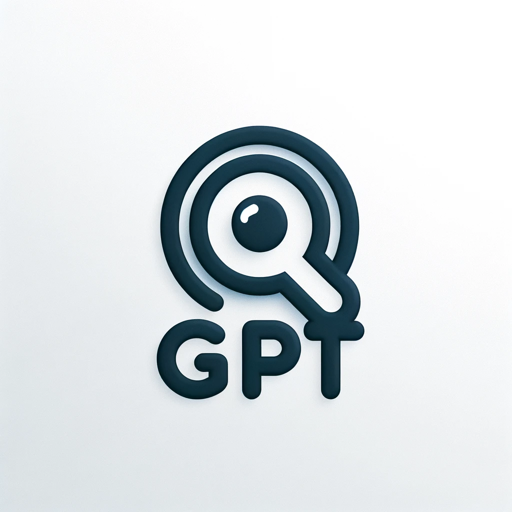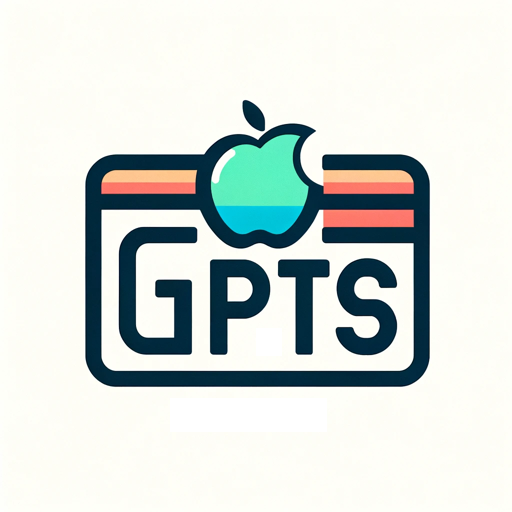SPARKGPT-AI-driven innovation assistant
Empower Your Ideas with AI Innovation
What is SPARK and how can it help me?
What idea do you want to develop using SPARK?
Tell me about a challenge you're facing.
Are you frustrated with something? Let's innovate.
Related Tools
Load More
GPT Finder 🔍
GPT Finder 🔍 is a search tool designed for efficiently finding the best custom GPTs from a selection of over 133,000 GPTs. It initially checks a specialized database and then utilizes Google search if necessary, ensuring that users find the best match amo

GPTs Works
Third-party GPTs store, chat for searching GPTs.

GPT Creator
Better than the GPT builder. Create GPTs that are poised for user engagement.

Hustle GPT
A guide for online income generation using AI tools.

GPT Finder 👉 Search BEST GPT in 3,000,000+ GPT
Quickly find the best GPT for you from the 3 million GPTs available at the GPT Store.可使用中文进行搜索与模糊查询,Created by AI进化论-花生

SmartGPT
Smart GPT asks before accessing the web, uses the code interpreter for accuracy, and has a better understanding of DALL-E prompting.
20.0 / 5 (200 votes)
Introduction to SPARKGPT
SPARKGPT, inspired by Dr. Sabba Quidwai, CEO of Designing Schools, is an empathy-driven AI tool designed to help users transform challenges into opportunities. It leverages the SPARK framework - Situation, Problem, Aspiration, Results, and Kismet - to guide users in developing innovative solutions. SPARKGPT engages users in understanding their context, encouraging reflection on each SPARK element. For example, an educator facing challenges with student engagement can use SPARKGPT to identify the core issue (Situation), understand the barriers (Problem), envision an ideal outcome (Aspiration), plan actionable steps (Results), and reflect on unexpected opportunities or lessons learned (Kismet).

Main Functions of SPARKGPT
Situation Analysis
Example
An entrepreneur wanting to understand market needs.
Scenario
A startup founder uses SPARKGPT to analyze the current market landscape, identify key competitors, and understand customer pain points. This helps in defining the context and setting the stage for further problem-solving.
Problem Identification
Example
A school principal addressing low student attendance.
Scenario
The principal uses SPARKGPT to delve into the reasons behind low attendance rates, gathering insights from teachers, parents, and students. This comprehensive problem identification allows for targeted interventions.
Aspiration Mapping
Example
A non-profit organization planning a new community initiative.
Scenario
The organization employs SPARKGPT to envision the ideal impact of their initiative, aligning their goals with community needs and setting a clear, aspirational vision for success.
Results Planning
Example
A project manager outlining steps for a product launch.
Scenario
Using SPARKGPT, the project manager creates a detailed action plan, breaking down tasks, setting timelines, and assigning responsibilities to ensure the product launch is executed smoothly and successfully.
Kismet Reflection
Example
A healthcare provider reviewing a new patient care protocol.
Scenario
After implementing the protocol, the provider uses SPARKGPT to reflect on unexpected outcomes, lessons learned, and areas for improvement, turning experiences into valuable insights for future practices.
Ideal Users of SPARKGPT
Educators and School Administrators
Educators and school administrators can use SPARKGPT to address various challenges in the education system, from student engagement to curriculum development. The tool helps them analyze situations, identify core problems, and develop innovative solutions tailored to their educational environment.
Entrepreneurs and Business Leaders
Entrepreneurs and business leaders benefit from SPARKGPT by gaining insights into market needs, identifying business challenges, and mapping out strategic plans. The tool aids in envisioning successful outcomes and planning actionable steps to achieve business goals.
Non-Profit Organizations
Non-profit organizations can utilize SPARKGPT to better understand community needs, plan impactful initiatives, and reflect on project outcomes. This helps them align their goals with community aspirations and continuously improve their programs.

How to Use SPARKGPT
1
Visit aichatonline.org for a free trial without login, also no need for ChatGPT Plus.
2
Familiarize yourself with the SPARK framework, developed by Dr. Sabba Quidwai. Understand the five elements: Situation, Problem, Aspiration, Results, and Kismet.
3
Identify a challenge, frustration, or idea you want to explore. Clearly articulate your context to provide a comprehensive background for analysis.
4
Engage deeply with each SPARK element. Reflect on the Situation, define the Problem, envision your Aspiration, outline desired Results, and consider the Kismet or serendipitous opportunities.
5
Iterate on the feedback and solutions provided by SPARKGPT. Utilize tailored suggestions and innovative approaches to develop practical and effective solutions.
Try other advanced and practical GPTs
PhD Motivator
AI-powered support for PhD students.

Design Muse
AI-powered interior design made easy.

Travel Planning
AI-Powered Travel Planning Made Easy

Deal Finder Helper
Discover the Best Deals with AI

MundlGPT - Edmund "Mundl" Sackbauer
AI-powered Viennese wisdom and humor.

AI Advantage Web Designer
AI-Powered Web Design Made Easy

File Converter 📁
Convert Files Seamlessly with AI Power
Homework Help 📚
AI-powered tool for smarter homework
URL Shortner 🔗
AI-powered URL Shortening Made Simple
Calculus Tutor
AI-powered calculus learning and problem-solving
Threat Modelling
AI-powered security threat analysis

CE5 Guide
AI-powered guidance for CE5 contact practice

- Research
- Problem Solving
- Brainstorming
- Strategy
- Innovation
SPARKGPT Q&A
What is SPARKGPT?
SPARKGPT is an AI-driven tool inspired by Dr. Sabba Quidwai's SPARK framework, designed to transform challenges into opportunities through empathy-driven innovation. It assists users in exploring their situations, defining problems, and developing actionable solutions.
How does SPARKGPT work?
SPARKGPT guides users through the SPARK framework's five elements: Situation, Problem, Aspiration, Results, and Kismet. By deeply understanding the user's context and reflecting on these elements, it provides tailored suggestions and innovative solutions.
What are common use cases for SPARKGPT?
Common use cases include brainstorming solutions to work-related challenges, developing innovative project ideas, refining business strategies, and enhancing academic research. SPARKGPT is versatile and can be applied to a wide range of fields.
Do I need any prerequisites to use SPARKGPT?
No specific prerequisites are required. However, having a clear understanding of the challenge or idea you want to explore and being familiar with the SPARK framework can enhance your experience.
What makes SPARKGPT unique?
SPARKGPT's uniqueness lies in its empathy-driven approach, rooted in the SPARK framework. It emphasizes understanding the user's context deeply, encouraging reflection, and fostering innovative solutions tailored to individual needs.